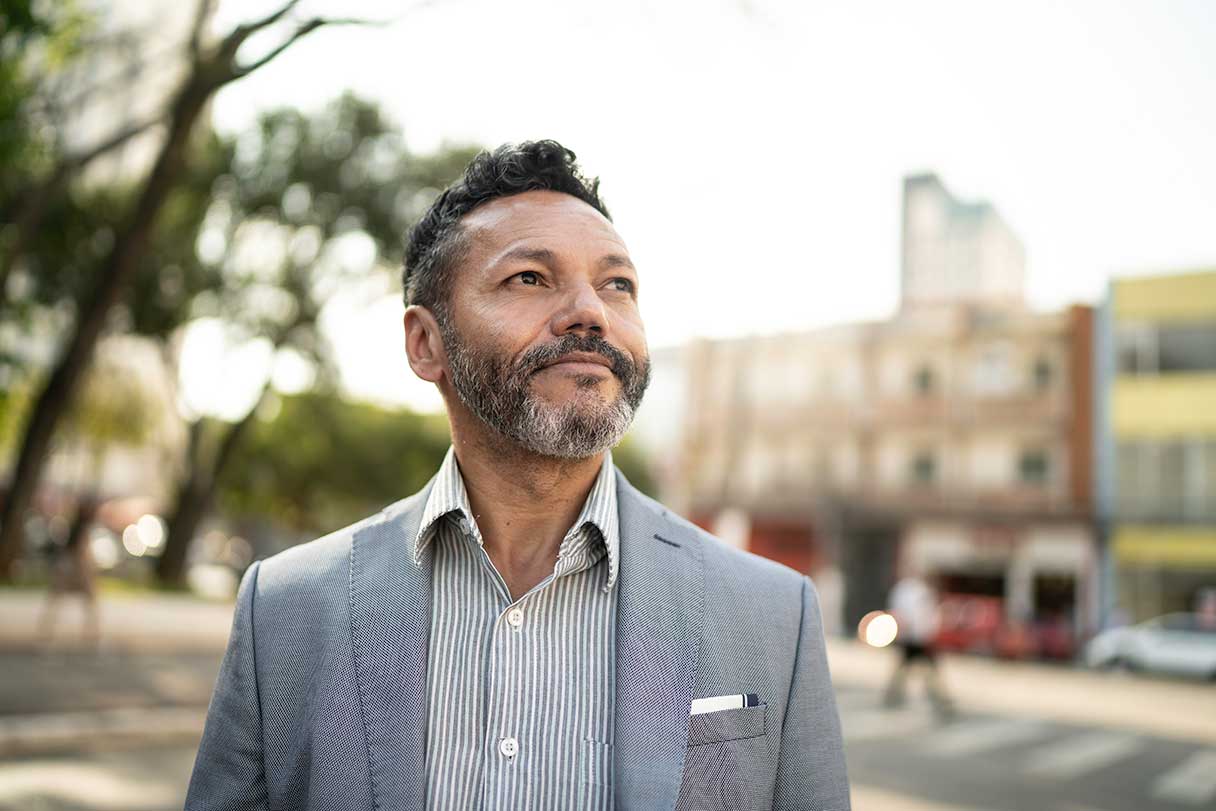For those having LASIK eye surgery, you’re most likely focused on preparing for the procedure and looking forward to improved eyesight without glasses or contacts. However, knowing what to expect after LASIK and preparing for your LASIK postoperative care are important steps toward a safe and healthy recovery from laser eye surgery.
This LASIK recovery timeline can help you learn about what to expect.
What Is LASIK?
LASIK, which stands for laser-assisted in situ keratomileusis, is a surgical treatment designed to help correct myopia (nearsightedness) and hyperopia (farsightedness) with astigmatism. Approved by the FDA in 1998, LASIK grew in popularity for its ability to correct these eye problems with less post-surgical discomfort, a quicker recovery and a reduction in postoperative haze.1
LASIK surgery essentially reshapes the cornea — the clear front part of the eye that refracts light and is responsible for our ability to see clearly. Using lasers, LASIK sculpts your cornea into the correct shape, directing how light enters.2
When treating nearsightedness, the central curve of the cornea is decreased; with farsightedness, it is flattened.3
LASIK Recovery Process: What to Expect
LASIK is one of the few surgeries that can be safely performed on both eyes on the same day. After the procedure, the surgeon will recommend that you use artificial tears to prevent dry eyes, a common side effect. If the dryness becomes severe, other treatments — such as steroid eye drops — may be given.3
It is not uncommon for some patients to require corrective LASIK procedures within the first year after surgery. This happens to around 10% of patients with LASIK, particularly those over age 40 or who have astigmatism.3
The days following surgery
Healing from LASIK takes a bit of time. In the first 24 to 48 hours after surgery, your vision will probably be blurry, and your doctor will have instructed you not to rub your eyes.4 While you are advised not to drive within the first 24 hours — and should have someone to take you home after surgery — you may be able to drive 24 hours after your surgery.5 Your doctor will let you know when you can safely get behind the wheel.
Some common side effects immediately after LASIK surgery include:5
-
Itchy eyes
-
Blurred vision
-
Sensitivity to light
-
Watering eyes
-
Burning sensations or a feeling of “grittiness” in the eyes
You should rest your eyes as much as possible during the first two days, avoiding reading and electronic screens of any kind.4
Your surgeon will likely provide you with a pair of protective glasses to wear for up to the first week after recovery, even to sleep. After that, you can usually transition to your own sunglasses.6
LASIK Recovery Timeline
Knowing what to expect in your recovery can make you feel more confident in your treatment. Here are some expectations for between one week and one year after your LASIK surgery.
One week after LASIK eye surgery
At one week post-surgery, it’s common to see improvements in your vision, though you may still experience some of the same side effects as in your first few days — particularly dry eyes and a glare or halo around lights.4
You should be able to return to your regular activities, including driving and light exercise, with some exceptions. You will want to avoid strenuous activity and refrain from submerging your face in water, such as in swimming pools and hot tubs. You may bathe if you keep your face out of the water, but avoid showers as per your surgeon's directions. Even after you're cleared to swim, your surgeon will likely recommend protective goggles. You should also refrain from applying anything to your eye area, such as makeup, sunscreen, lotions or perfumes, for another week.4
Two weeks after LASIK eye surgery
The two-week mark is the first milestone of recovery where many people feel fully recovered from LASIK surgery. You should feel better than you did in the first week, but you may still experience some side effects, such as dry eyes or light sensitivity. Driving at night may still be difficult. Your symptoms should continue to improve over time, and you can treat many of your issues with artificial tears.4
One month after LASIK eye surgery
If you don’t feel fully recovered by the two-week mark, you will likely feel much better by one month post-surgery. This is when your surgeon may request follow-up appointments to monitor your progress. Most people can resume normal activities, including swimming and applying lotions and makeup. However, you might have to wear protective goggles during certain activities. Depending on your recovery and your surgeon's assessment, your return to these activities might be postponed until two months post-surgery.4
At any time during the healing process, until you feel fully recovered, prioritize safety in everything you do since you may not see as clearly as normal and your corneas are still healing.4
Three months after LASIK eye surgery
By the three-month mark, you should be fully recovered and unlikely to need further visits to your doctor unless you have follow-up questions, symptoms or concerns. If you experience any sudden, dramatic vision changes after this time, contact your doctor immediately.4
Six months after LASIK eye surgery
At six months post-surgery, most people are enjoying their improved vision with few complaints. Some doctors may request a six-month follow-up appointment to ensure there are no complications.4
Some people do discover that they need LASIK enhancement surgery, especially if their vision has changed or gotten worse. If all goes well, you will likely transition to yearly eye exams once again.4
One year after LASIK eye surgery
One year after surgery, unless you experience any vision changes, you will probably not be thinking much about your vision.4
However, if you experience any of the following symptoms at the one-year mark, it's important to check in with your doctor:4
-
Seeing a glare or halo around lights
-
Problems with night vision
-
Changes in vision
-
Changes in distant or near vision
-
Sensitivity to light
Complications and Efficacy of LASIK
While no surgery is 100% effective across the board, LASIK has a high rate of patient satisfaction. According to one study, patient satisfaction reports are often as high as 92% to 95%.3
In rare cases, complications can occur, but most of these happen to only a small percentage of LASIK patients. These can include:3
-
Diffuse lamellar keratitis. This blurriness and grittiness, known as "sands of Sahara syndrome," is a kind of inflammation. It occurs in about 1 in 50 cases and responds to corticosteroid treatment.
-
Corneal flap complications. Affecting 0.1% to 4% of patients, this injury or ingrowth to the corneal flap can cause vision loss.
-
Post-LASIK ectasia. Further thinning of the cornea occurs in fewer than 1% of LASIK patients.
-
Infectious keratitis. Fewer than 0.1% of patients develop a post-LASIK infection.
-
Rare complications. These can include retinal detachment, vitreous hemorrhage and neuropathy and occur in fewer than 0.1% of LASIK patients.
While no one enjoys having surgery, your improved vision after LASIK will soften the discomforts of recovery, which are relatively quick anyway.
Financing LASIK Eye Surgery With the CareCredit Credit Card
If you'd like to be less dependent on glasses or contact lenses, you may want to consider taking the first step to determine if you're a good candidate for LASIK eye surgery. Schedule an appointment for an eye exam and a pre-operative consultation with your eye doctor, who can review your eye health and answer your questions. Remember that the CareCredit credit card provides a convenient option for financing not only your LASIK consultation and procedure but other vision care too.* Use our Acceptance Locator to find a vision specialist near you that accepts CareCredit.
Continue to invest in your wellness journey by downloading the CareCredit Mobile App to easily manage your account, find a provider on the go and easily access the Well U blog for more great articles, podcasts and videos.
In addition to vision care, you can also use your CareCredit credit card for dentistry, cosmetic, pet care, hearing, health systems, dermatology, pharmacy purchases, spa treatments and so much more within the CareCredit network. How will you invest in your health and wellness next?
Author Bio
Jordan Rosenfeld has been freelance writing for 21 years about finances, health, education and more. Her work has appeared in The Atlantic, The Billfold, Good Magazine, GoBanking Rates, Daily Worth, Quartz, Medical Economics, The New York Times, PayPal, The Washington Post and more.








